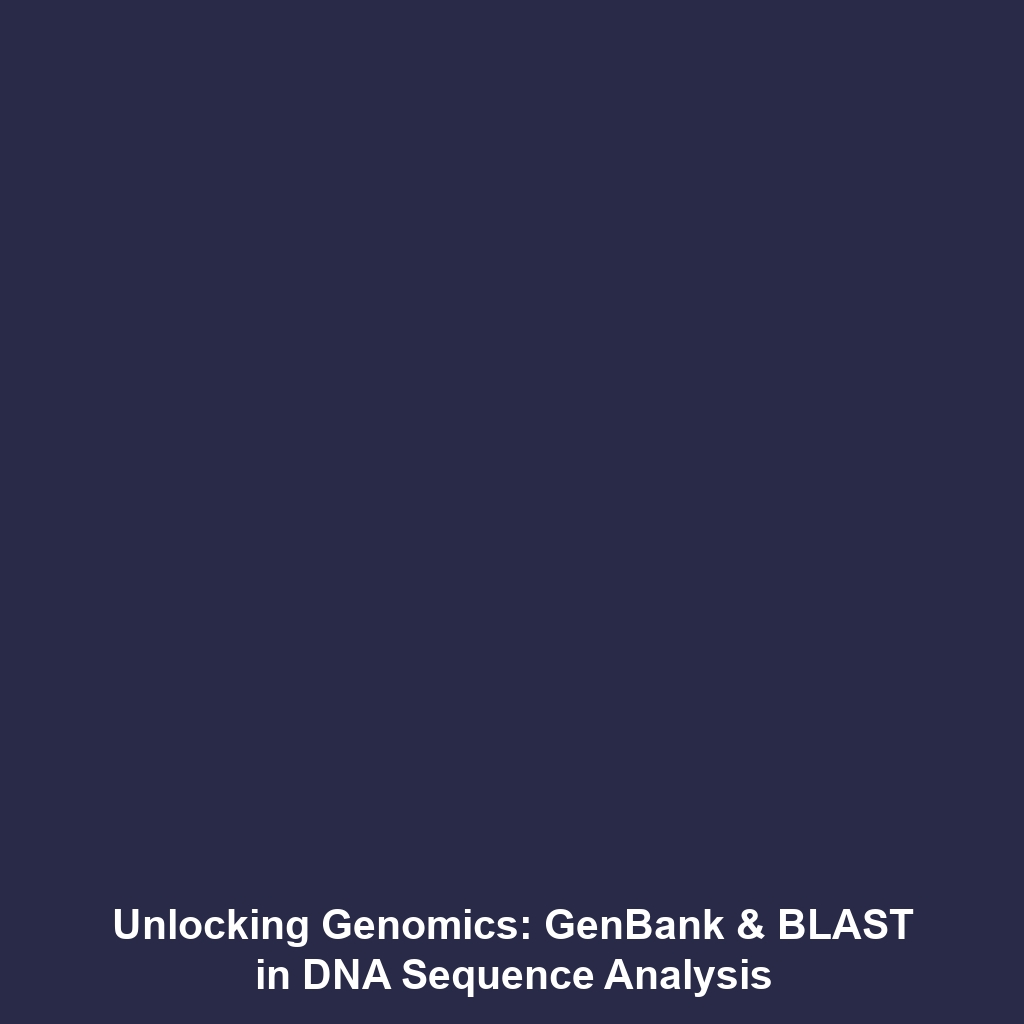Development of Public Databases like GenBank and Tools like BLAST for Comparing DNA Sequences
Introduction
The Human Genome Project (HGP) represented a monumental achievement in the field of genetics, unlocking the entire sequence of human DNA. Central to this endeavor was the creation of public databases such as GenBank and analytical tools like BLAST, which have revolutionized how scientists compare and analyze DNA sequences. These resources not only enhance research efficiency but also promote collaborative studies across the globe. The ongoing evolution of these databases and tools ensures they remain pivotal for genomic research and its myriad applications in health sciences and biotechnology.
Key Concepts
GenBank: A Comprehensive DNA Sequence Database
GenBank, maintained by the National Center for Biotechnology Information (NCBI), is a critical resource that provides a comprehensive and freely accessible archive of DNA sequences. It supports the objectives of the Human Genome Project by:
- Facilitating data sharing among researchers worldwide.
- Housing billions of nucleotide sequences, enabling users to retrieve information efficiently.
- Integrating annotations and links to related resources, such as protein sequences and genetic variations.
BLAST: A Tool for Sequence Comparison
BLAST (Basic Local Alignment Search Tool) is a powerful algorithm that enables researchers to identify regions of similarity between biological sequences. Its significance includes:
- Rapidly comparing DNA sequences against vast databases like GenBank.
- Providing insights into evolutionary relationships and functional annotations.
- Determining the potential significance of newly sequenced genomes in a biological context.
Applications and Real-World Uses
The development of public databases like GenBank and tools such as BLAST has vast implications for the Human Genome Project:
- How GenBank is used in the Human Genome Project: Researchers use GenBank to access the human genome sequence data, facilitating various studies including disease association research.
- Applications of BLAST in the Human Genome Project: BLAST is crucial for identifying homologous sequences, aiding the discovery of gene functions and understanding genetic diseases.
Current Challenges
Despite the successes of GenBank and BLAST, there are several challenges and issues in this field:
- Data management and storage limitations for the ever-increasing amount of genomic data.
- Ensuring the accuracy and quality of submitted sequences.
- The need for improved algorithms to handle complex genomic comparisons, particularly in non-model organisms.
Future Research and Innovations
Research focusing on the future of public databases and tools is promising. Innovations could include:
- Next-generation sequencing technologies that allow for faster and more cost-effective data generation.
- Artificial Intelligence methods to enhance data interpretation and error detection.
- Integration of multi-omics data, combining genomics, proteomics, and metabolomics for comprehensive biological insights.
Conclusion
The ongoing development of public databases like GenBank and tools like BLAST is essential for maximizing the benefits of the Human Genome Project. These resources provide a foundation for genomic research and medical advancements. Researchers, educators, and policymakers should continually support these initiatives to explore new frontiers in genetics. For more information on related topics, visit our articles on genetic research and biotechnology applications.

Leave a Reply